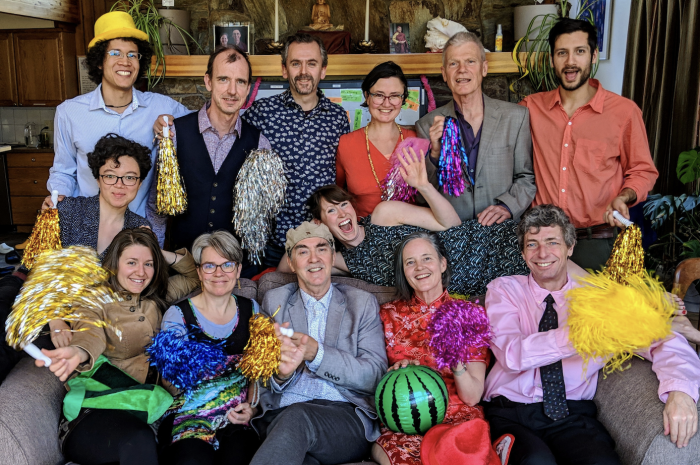What do you want? Do you want to… live in a thriving, conscious community that values people above profit? Does living and working with people who also value spiritual growth and awakening sound… appealing? It is—we think it’s wonderful, and beyond that, what humanity is destined for.
And, it’s not easy. We need seriously effective tools to help integrate our spiritual ideals with the real world. Everyday life—including people, and their personalities—are always human. They require grit.
In the late 1990s in Kyoto, Japan, a sangha was born. Our sangha. A few of us began living together, in a conscious community. Our lineage honors teachers all the way back to the Buddha through Theravadan and Vajrayana traditions; beyond the East, also through the Western Mysteries. And over two decades, many a teaching and training, and a relocation to Canada since, we’ve learned a thing or two about how to live, unfold, and awaken—together.
As teachers ourselves, we work with students on the path of awakening in the context of conscious community. We’ve now lived and learned together on the 310 acres of British Columbia that we call Clear Sky Retreat Center for nearly 20 years. We’d like to share the epic love and learning of it.
Here are five tips for building, growing, and flourishing in conscious community. We hope this helps you grow your own. And you are extremely welcome to come visit our conscious community and center! Come experience and learn firsthand, and help co-create it.
Five Tips for Building Conscious Community:
1. Consciously choose to act from a place of intention.
You need a starting point. The most effective place to begin: conscious and shared intention. Without intention, we go on autopilot, and default to “bumbling along.” This does not benefit anyone in the long run. To ensure you’re not defaulting to comfort or status quo, discuss and commit together to be intentional in the decisions you make as a team.
2. Every person really is their own country.
We don’t all speak the same language. We don’t have the same views, especially about how we should work or live or love together. We all have different stories. Keeping this in mind can help us learn to treat each other with respect, and engage actively in learning each other’s “foreign languages.” This is a vital alternative to getting upset when someone sees things differently.
Conscious community necessitates taking this alternative. It’s key not to take it personally when someone shares a differing or contrary opinion. You’ll want to observe where you automatically expect someone to be just like you, and choose the radical option of shifting that habit.
3. Face the music: All of our egos want power and control.
Our ego was and is built and shaped as a response to rejection. A child of approximately two years old realizes it is “separate” from mother, and this separation is experienced as painful rejection—and a loss of unity. Subtly or blatantly, from that point of the ego’s formation its main function is to control and manipulate, and secure power (survival), all by way of getting what we want.
And what we want is to feel secure and protect against feeling that same deep hurt of rejection and loss. When we recognize this conditioning, we can begin to see it in action. Then the opportunity arises to stop this conditioning from running blindly unchecked.
Check in with yourself the next time you internally plot and strategize to get what you want; simply notice this is what you are doing. You’re not necessarily doing anything wrong—but being aware and honest with yourself about your motivations will create leverage for you to choose what is best for the group. What’s best for everyone may be the same or different from your current plans.
4. Happiness can’t arise for me if it doesn’t arise for you.
We are in it together. If your friends, partners or colleagues are not doing well—regardless of how you are—you can’t be totally happy. So, working together towards everyone’s benefit is the most dependable path to greater happiness for, well, everyone. Yourself included. The deepest joy comes when we promote true benefit for others.
5. A conscious community needs a powerful and overarching vision.
A powerful, shared vision creates the glue that holds a conscious community together when things get tough; when our egos want to fight, run, or avoid what needs to be faced. In struggle, we have the habits of sink into our own likes, dislikes, and hurts. Having an established shared vision grounds us in something bigger and more important to return to and lean on when we’re going through the thick of it.
These are five of the many things that have helped us grow as a community, in awareness, goodwill, and the aspiration to benefit all beings. We hope you find these tips fruitful. The more conscious communities there are in our world, the better—for everyone and everything. Go for it!









Read 2 comments and reply